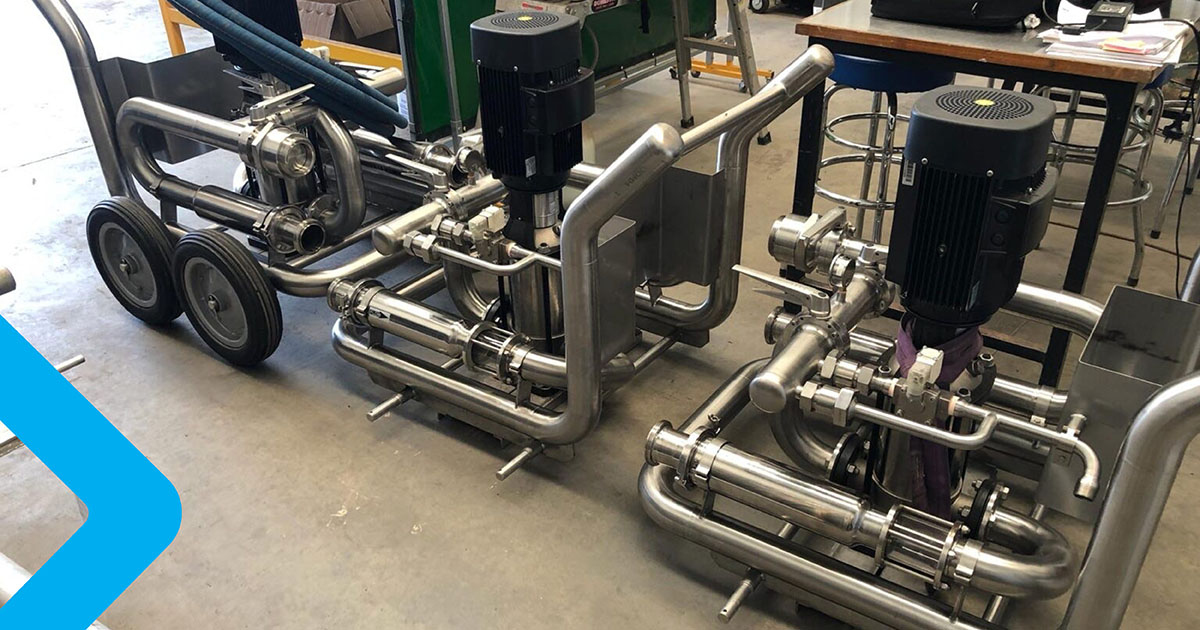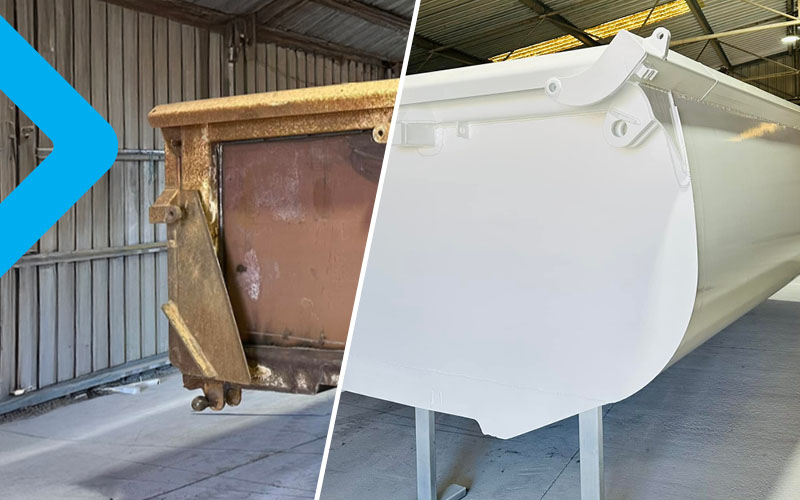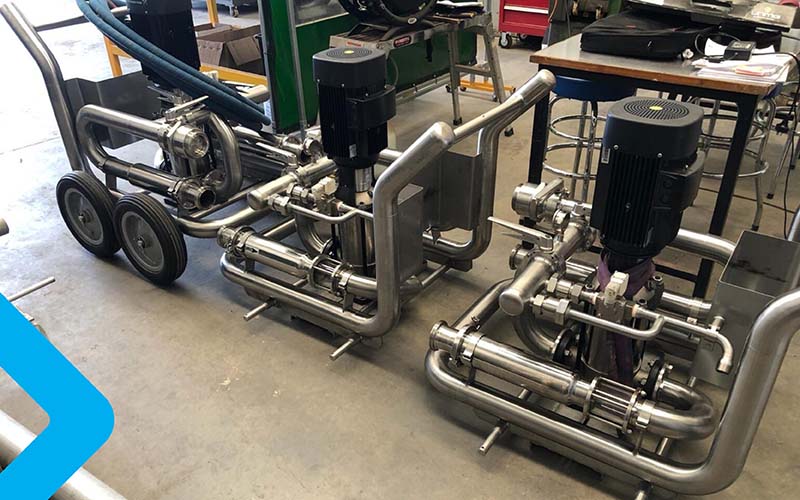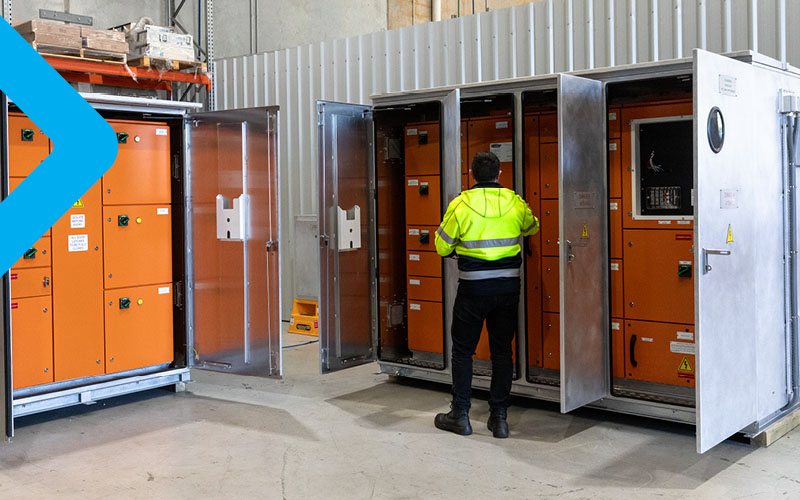What if the materials you chose today could reduce waste and energy consumption for generations to come? In modern construction, that’s no longer a distant goal - it’s an expectation. Stainless steel stands at the forefront of this shift, combining strength, flexibility, and sustainability in a single solution.
As builders, project managers, and industrial operators look to balance performance with environmental responsibility, stainless steel offers a pathway to deliver durable, compliant, and cost-effective results while meeting the demands of sustainable design.
Durability that reduces waste
A key advantage of stainless steel is its ability to withstand decades of service without significant deterioration. Resistant to corrosion, mechanical wear, and extreme weather, it maintains structural integrity where other materials fail.
By extending service life, stainless steel reduces the frequency of repairs and replacements. Fewer interventions mean less material waste, lower resource demand, and a smaller environmental footprint over the asset lifecycle, making it one of the most practical green building materials available today.
Energy efficiency and operational savings
Material choice directly affects energy use in both buildings and industrial applications. Stainless steel’s reflective properties help reduce cooling loads in commercial façades and roofing. In industrial facilities, its ability to maintain efficiency under high heat ensures energy is conserved rather than lost to fatigue or deformation.
Over decades, these performance characteristics lead to reduced energy demand, lower emissions, and measurable cost savings supporting both environmental goals and bottom-line performance.
Design flexibility for modern projects
Beyond resilience, stainless steel provides unmatched adaptability. Fabrication techniques allow for the creation of custom components, enabling unique architectural expressions and efficient industrial solutions.
This flexibility means lighter yet stronger structures, modular assemblies that simplify future disassembly, and customised shapes that reduce excess material use. For developers and asset owners, it creates opportunities to balance design innovation with sustainability outcomes, without compromising compliance or durability.
Meeting Australian Standards
Sustainability and compliance go hand in hand. In Australia, stainless steel must meet standards such as AS/NZS 1554 for welding and AS 4100 for structural steel. These frameworks ensure materials deliver long-term safety, reliability, and performance.
Working with experienced fabricators helps projects not only meet these standards but also integrate quality control at every stage from surface preparation to final inspection. This ensures fewer defects, less rework, and stronger alignment with sustainability commitments.
Low maintenance, long-term value
Another contributor to sustainable outcomes is reduced maintenance demand. Stainless steel requires minimal upkeep to maintain its performance and appearance, even in coastal or chemically exposed environments.
Where other materials need coatings, sealants, or frequent replacement, stainless steel’s inherent resistance minimises interventions. This reduces environmental impacts associated with maintenance activities and supports cost-efficient asset management over the long term.
Supporting the circular economy
Stainless steel is 100% recyclable without losing quality. Offcuts from fabrication or end-of-life components can be reprocessed into new materials, minimising reliance on virgin resources.
For asset owners and builders, this recyclability directly supports circular economy goals reducing waste, cutting emissions, and contributing to more responsible construction practices. By choosing stainless steel, projects reinforce their sustainability credentials while aligning with global decarbonisation efforts.
Choosing the right fabrication partner
While stainless steel offers strong advantages, results depend on the skills and processes of the fabrication partner. Experienced teams bring more than technical execution - they provide insight into material selection, compliance strategies, and design optimisation.
The right partner ensures projects run smoothly, are delivered on time, and achieve the desired sustainability outcomes. From commercial construction to heavy industrial projects, collaboration with specialists helps transform stainless steel from a raw material into a tailored, high-value solution.
Applications across sectors
The versatility of stainless steel allows it to support sustainable outcomes across multiple industries:
- Commercial buildings: façades, roofing, and fit-outs that combine efficiency with architectural appeal
- Industrial facilities: tanks, pipelines, and process equipment designed to withstand harsh environments
- Infrastructure projects: bridges, tunnels, and transport hubs requiring long-term corrosion resistance
- Residential projects: fixtures, railings, and kitchens offering both durability and low maintenance
Each sector benefits from stainless steel’s durability, flexibility, and recyclability, making it a cornerstone of sustainable building strategies.
Durability and sustainability in every project
Sustainable construction requires more than promises - it demands materials and processes that consistently deliver durability, efficiency, and environmental responsibility. Stainless steel fabrication achieves all of these, supporting builders and asset owners as they work toward greener outcomes without compromising on performance.
By partnering with experienced fabricators, projects gain the assurance of compliance, long-term value, and tailored solutions that meet both practical and sustainability goals. Stainless steel remains a future-focused choice for industries striving to build smarter and more responsibly.
Ready to build sustainably?
Contact Bluechip Industrial Services today to discuss your next project and discover how our expertise in stainless steel fabrication can help you achieve your sustainability goals.
_Line.svg)



























